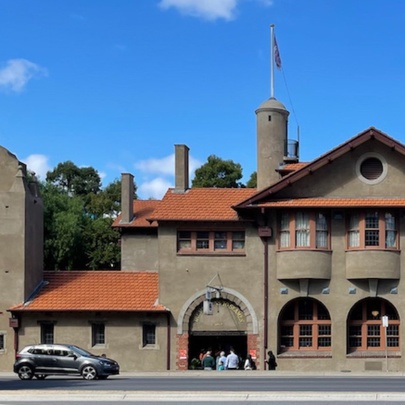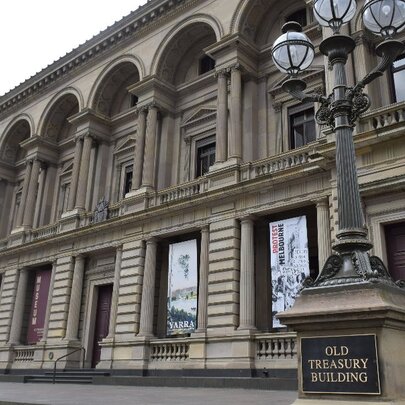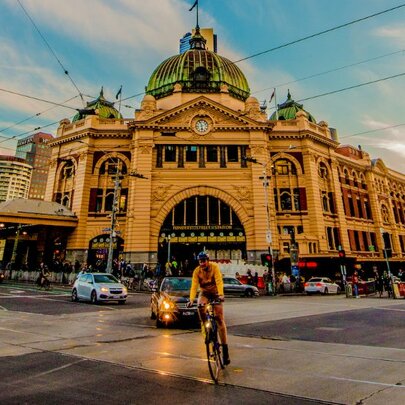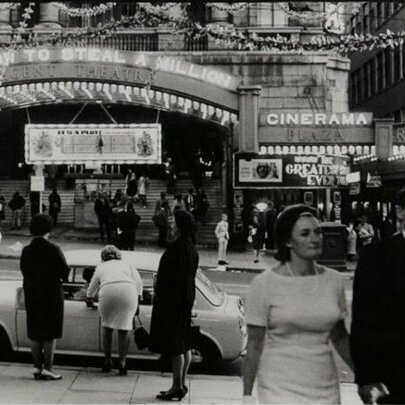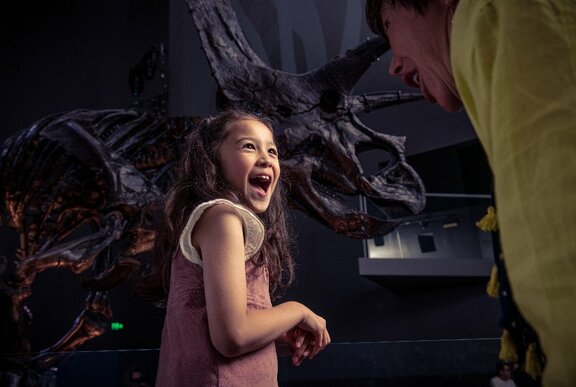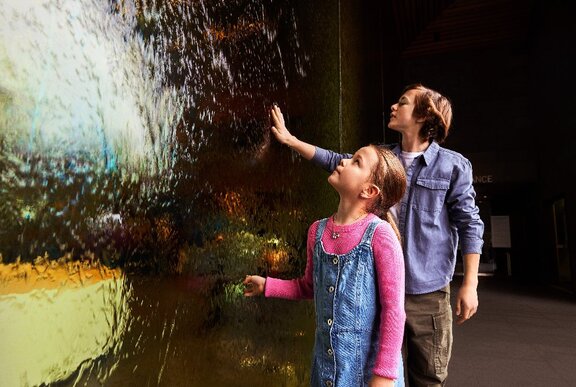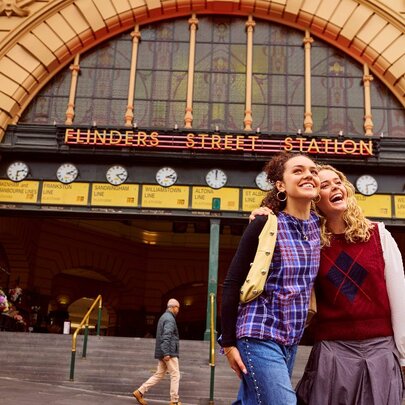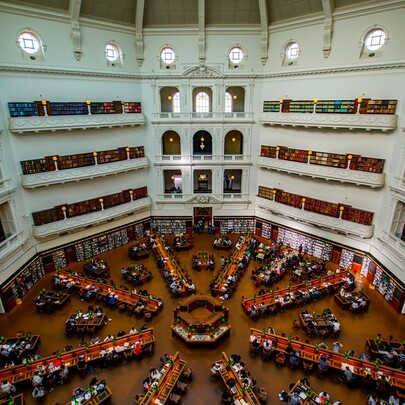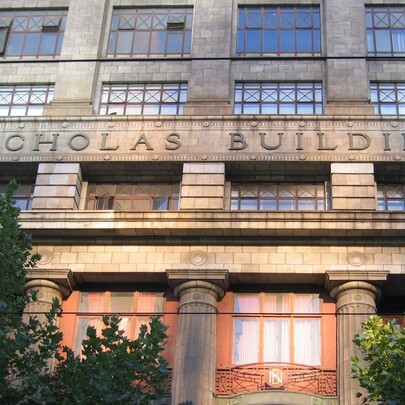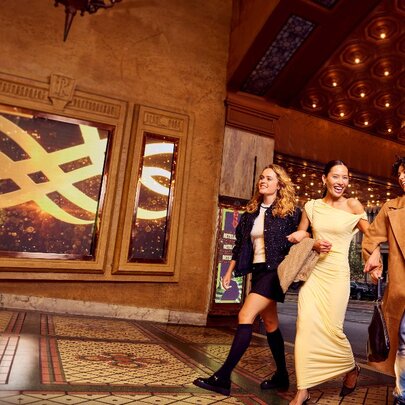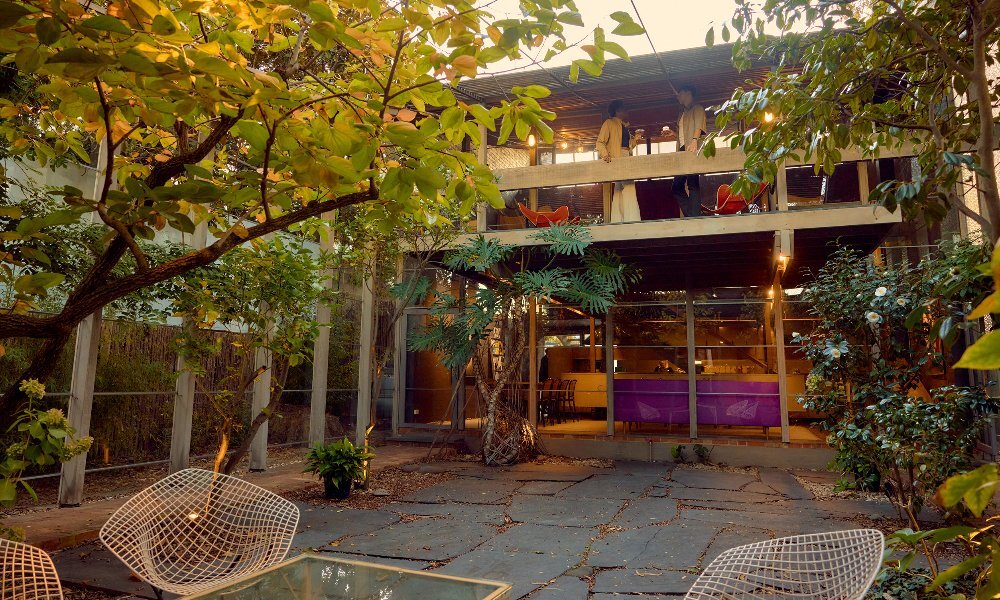
Rare buildings that are only in the city
From Gothic gargoyles to decadent deco and modern museums. A wander through the city delivers design inspiration at every turn.
Robin Boyd House
Visit the home of famous architect Robin Boyd on a quiet residential street in Melbourne. This innovative abode will transport you to the modernist hay day of the 1950s. Think sweeping pavilions, a dramatic mezzanine and clever built-in storage. Learn about the architect and his innovative projects on a guided walking tour. Or have a night out at Spring Sunset Cocktails at Walsh Street. You'll get to sip on 1960s-inspired cocktails and discover more about this iconic party house.
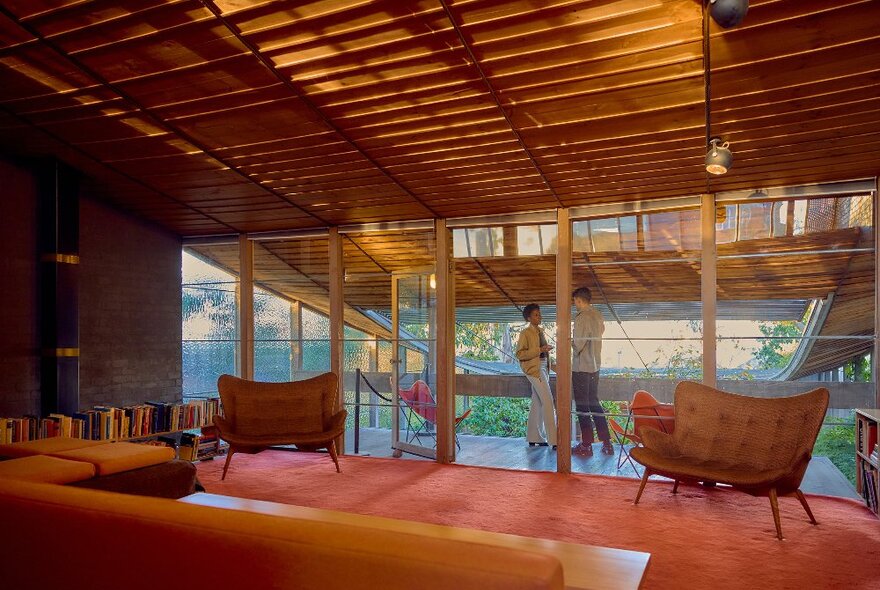
narrm ngarrgu Library
narrm ngarrgu Library is a brand new community space right next to Queen Victoria Market. It spans three levels and features a special kid’s library and rooftop terrace overlooking the stunning city skyline. Explore over 30,000 books in a variety of languages. Check out the makerspaces featuring 3D printers, laser cutters, sewing machines and sound studios. You can event book an event space for your next workshop, meeting or gathering.
The Capitol
This cinema was brought to life by architects Marion Mahony Griffin and Walter Burley Griffin in 1924. Today it stands as a beautiful example of Gothic architecture. Its intricate interior attempts to capture the feeling of being inside a glittering cave. A geometric ceiling houses thousands of coloured lamps. The Capitol has been recently revived with a five-year restoration by RMIT and Six Degrees Architects.
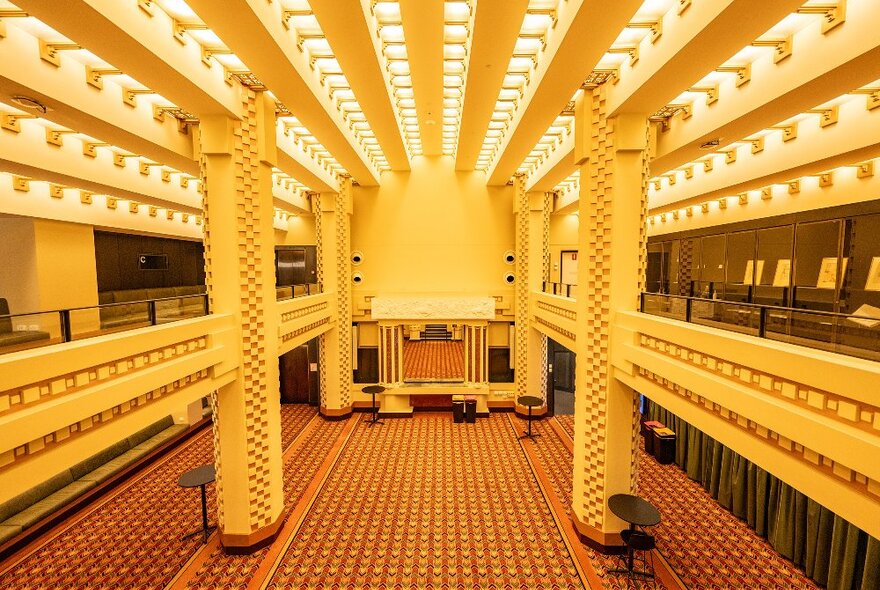
Melbourne Recital Centre
The swirling wooden interior of the Melbourne Recital Centre may look beautiful but it also serves an important function. Lauded as one of the best in the city for its state-of-the-art acoustics, it has earned its tagline as ‘the best place to hear’. The honeycomb exoskeleton and bubble-like glass exterior were designed to look like gift wrapping. Protection for the delicate ‘gift’ inside.
Arts Centre
The Arts Centre combines a twinkling spire resembling a ballerina’s tutu, with the stark, concrete curves of Hamer Hall. Inside the partly-subterranean building are a series of stages and performance rooms. Academy Award-winning costume designer John Truscott designed the lush gold and red interiors.
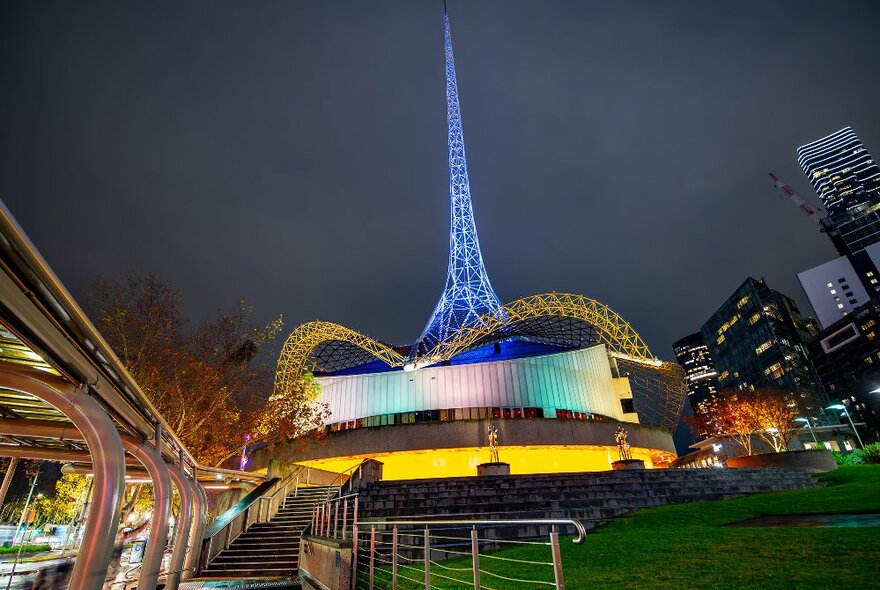
NGV
The monolithic exterior of the NGV International building betrays its airy, light-filled interior. Enter via the much-photographed water wall, and head towards the Great Hall. It houses the world’s largest stained glass ceiling. The gallery regularly hosts some of Australia’s best exhibitions, as well as events in the pretty rear garden.
The Nicholas Building
The heritage-listed Nicholas Building at 37 Swanston Street is an icon of Melbourne ingenuity and style. Built in 1926, its labyrinthine corridors lead to a hive of creative communities. On the ground floor you'll find Cathedral Arcade with its striking stained glass ceiling. Upstairs you’ll meet bespoke shoemakers and milliners, artists and purveyors of magic. Plan a vertical adventure with our ultimate guide to the Nicholas Building.
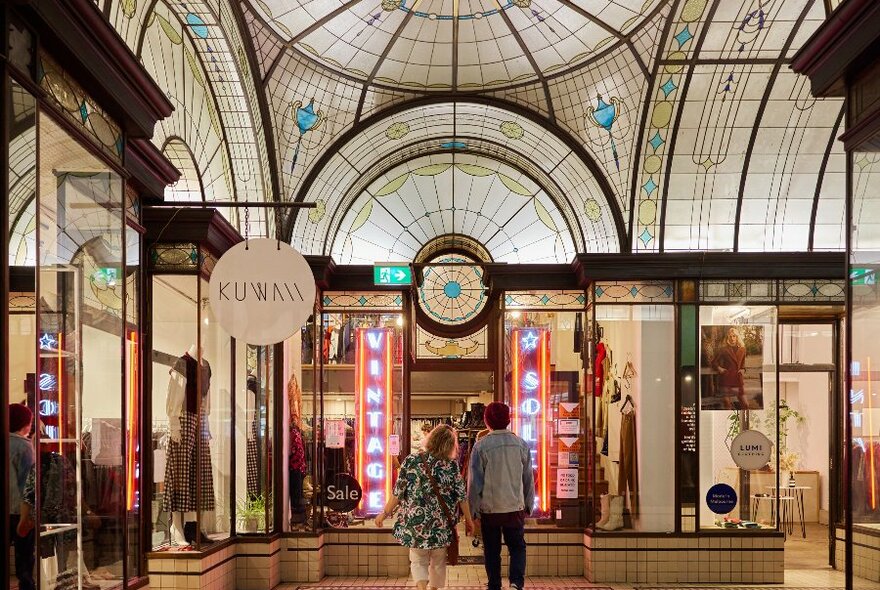
Old Melbourne Stock Exchange
The former stock exchange building is also a Gothic glamour. It’s decorated with gargoyles, carved stonework, and stained glass. Mid-1800s architect William Wardell designed the cathedral-like ANZ Gothic Bank building. Look up and spot the gilded ceilings that adorn the sandstone building.
Royal Exhibition Building
This architecture icon of the Melbourne landscape is as striking up close as it is from afar. Located in the Carlton Gardens, the impressive 140-year-old Royal Exhibition Building was constructed for the 1880 Melbourne International Exhibition and is now a World Heritage Listed site. For first time in a century, the dome promenade can now be explored by the public when you book an expert tour.
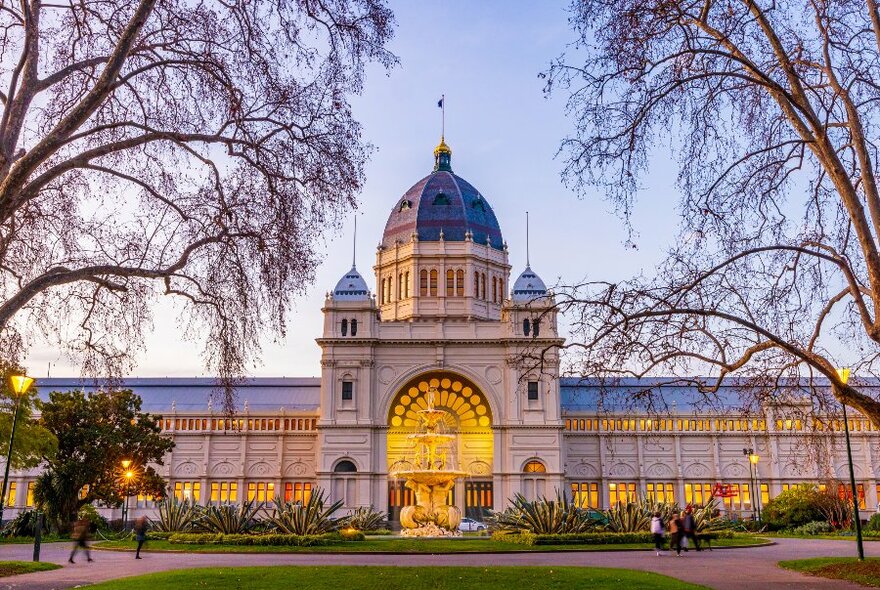
Manchester Unity Building
One Gothic beauty in Melbourne’s bustling CBD is the Manchester Unity Building. Built in 1932, it was the first building in Melbourne with an escalator. The stunning entry level is lined with marble and mosaic, punctuated with copper plated elevator doors. Book a tour of the building to visit the lovingly restored eleventh-floor boardroom. You’ll also get a rare peak at the rooftop terrace, once the location for a buzzing cafe and tearoom.
Flinders Street Station
One of Melbourne’s most iconic landmarks, Flinders Street Station has a long and interesting history. The first ever station on the site opened in 1854 and was merely a collection of weatherboard sheds. Today it features a state-of-the-art lighting system, which illuminates the iconic green-domed station in a dazzling display at night.
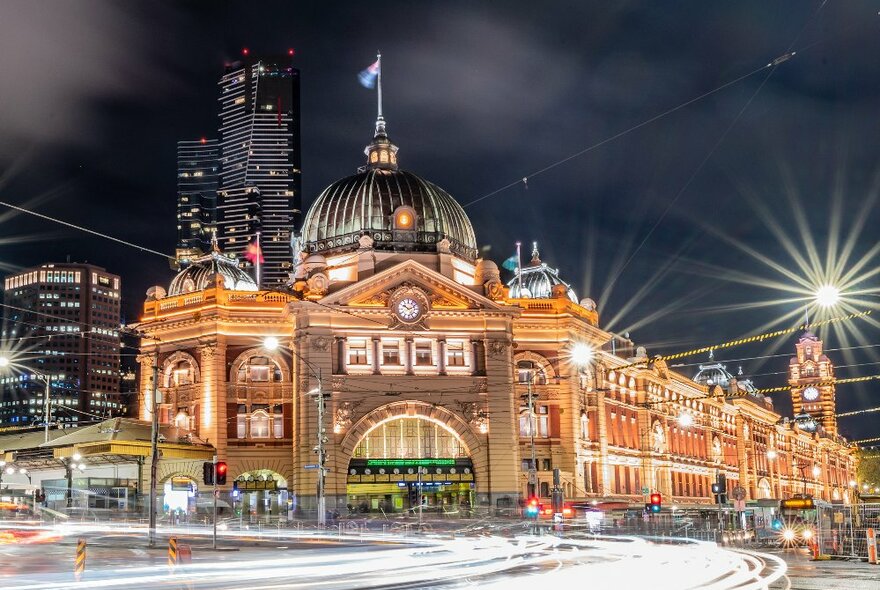
Government House
Completed in 1876, Government House in Melbourne was the largest governor’s residence of its time with almost 240 rooms. It features three sections – the state apartments, private apartments and the ballroom. The latter could well be the most striking room in the building. It's home to three crystal chandeliers made up of 1,000 crystals. Fun fact: the dining room table is as long as a cricket pitch and can seat up to 54 people. Join a Government House tour year round.
ACCA
With its striking red rusted exterior, you can't miss the Australian Centre for Contemporary Art. It was designed to resemble the warehouses and foundries that once occupied the site. Its shed-like steel and metal appearance is a sculpture in itself; a nod to the art it contains within. Speaking of art, look for the giant, yellow sculpture by Ron Robertson-Swann, and snap a picture within the walls of its geometric structure.
More historic sights in Melbourne
The Mission to Seafarers Victoria
Explore this heritage-listed building in the heart of Melbourne's Docklands
Last updated on Thu 5 Jun 2025
Discover more
Flinders Street Railway Station
Iconic domed railway and metro hub, opened in 1910, with a yellow facade and an arched entrance.
State Library Victoria
Australia's oldest public library and one of the first free public libraries in the world.
Nicholas Building
This historic building is home to an eclectic mix of galleries, boutiques and artists.
